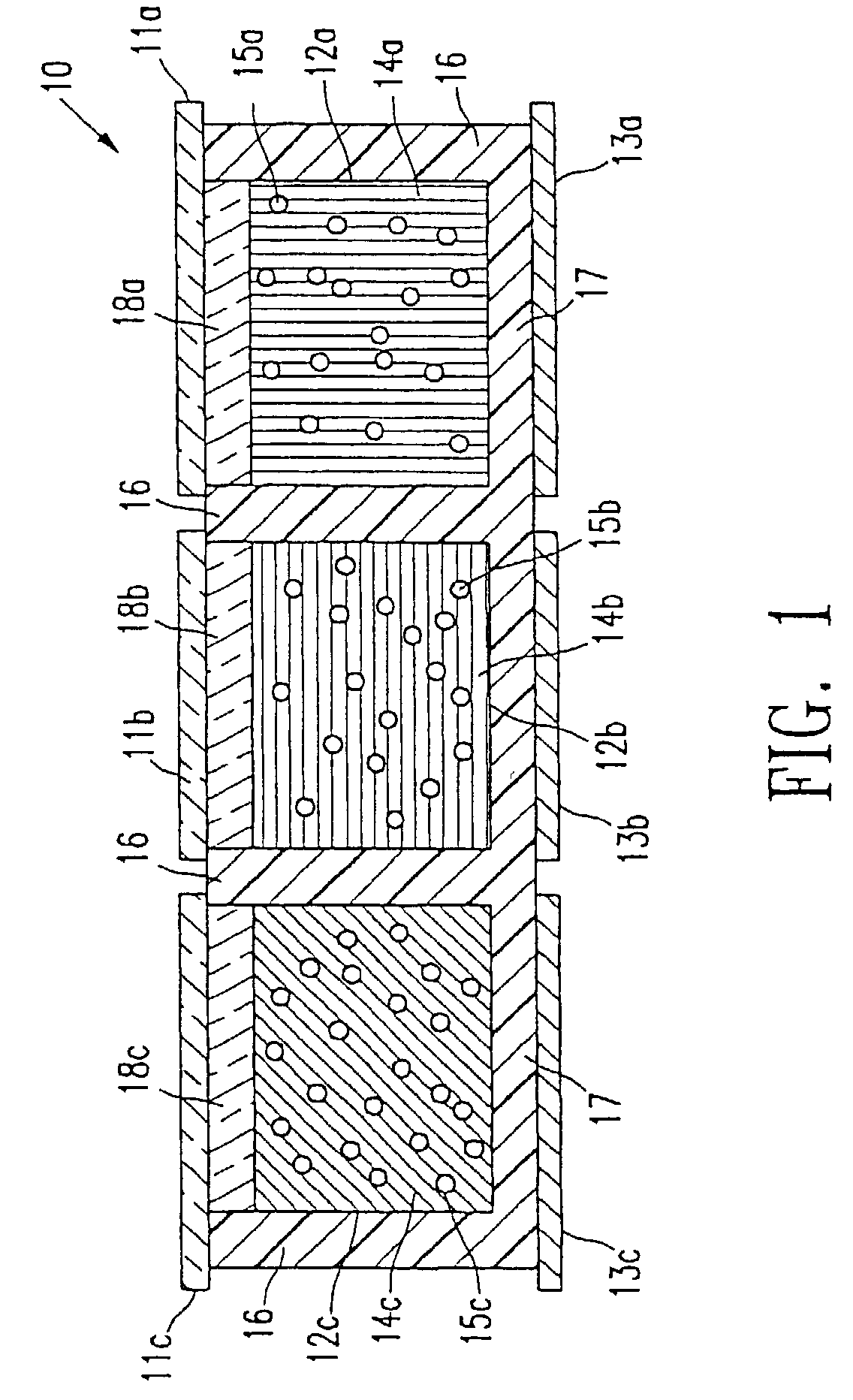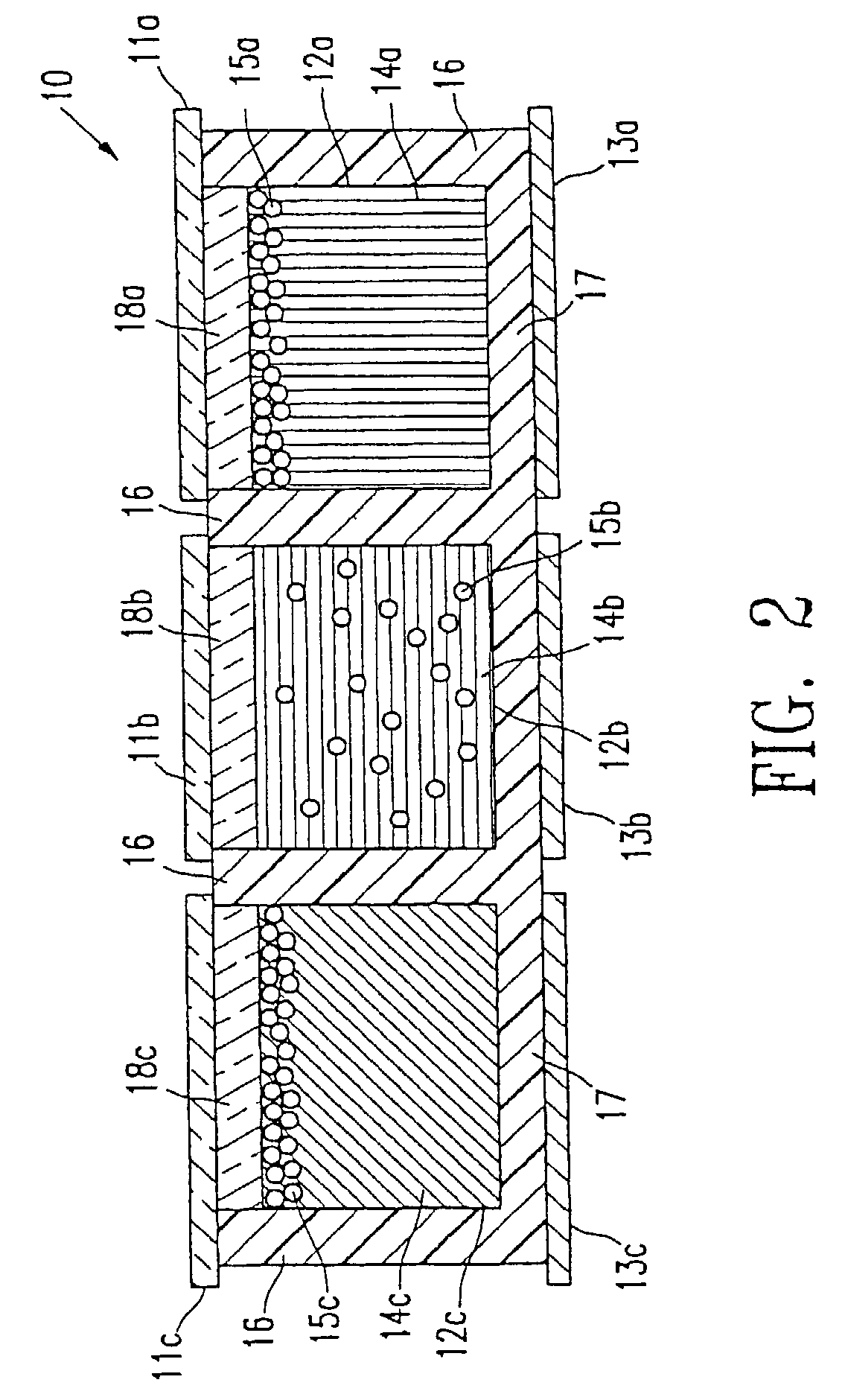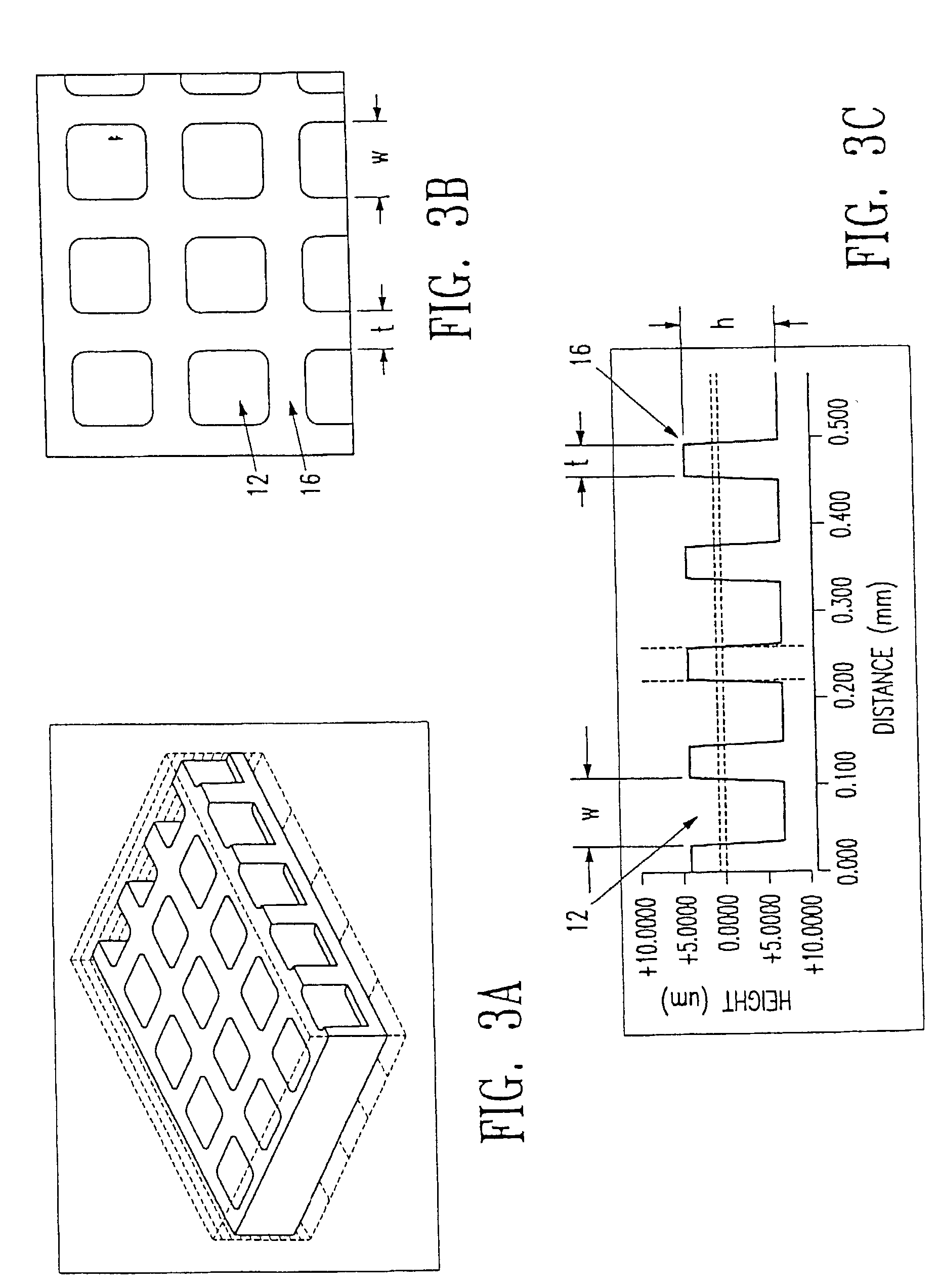Composition and process for the sealing of microcups in roll-to-roll display manufacturing
a technology of microcups and manufacturing process, applied in the field of electrotrophoretic display, to achieve the effect of good film integrity and barrier properties, good coating and adhesion properties, and high quality
- Summary
- Abstract
- Description
- Claims
- Application Information
AI Technical Summary
Benefits of technology
Problems solved by technology
Method used
Image
Examples
example 1
Microcup Formulation
[0092]35 Parts by weight of Ebecryl 600 (UCB), 40 parts of SR-399 (Sartomer), 10 parts of Ebecryl 4827 (UCB), 7 parts of Ebecryl 1360 (UCB), 8 parts of HDDA, (UCB), 0.05 parts of Irgacure 369 (Ciba Specialty Chemicals) and 0.01 parts of isopropyl thioxanthone (ITX from Aldrich) were mixed homogeneously and used for micro-embossing.
example 2
Preparation of Microcup Array
[0093]A primer solution comprising of 5 parts of Ebecryl 830, 2.6 parts of SR-399 (from Sartomer), 1.8 parts of Ebecry 1701, 1 part of PMMA (Mw=350,000 from Aldrich), 0.5 parts of Irgacure 500, and 40 parts of methyl ethyl ketone (MEK) was coated onto a 2 mu 60 ohm / sq. ITO / PET film (from Sheldahi Inc., MN.) using a #3 Myrad bar, dried, and UV cured by using the Zeta 7410 (5 w / cm2, from Loctite) exposure unit for 15 minutes in air. The microcup formulation prepared in Example 1 was coated onto the treated ITO / PET film with a targeted thickness of about 50 μm, embossed with a Ni—Co male mold having a 60 (length)×60 (width) μm repetitive protrusion square pattern with 25–50 μm protrusion height and 10 μm wide partition lines, UV cured from the PET side for 20 seconds, removed from the mold with a 2″peeling bar at a speed of about 4–5 ft / min. Well-defined micro-cups with depth ranging from 25 to 50 μm were prepared by using male molds having corresponding pr...
example 3
Pigment Dispersion
[0094]6.42 Grams of Ti Pure R706 were dispersed with a homogenizer into a solution containing 1.94 grams of Fluorolink D from Ausimont, 0.22 grams of Fluorolink 7004 also from Ausimont, 0.37 grams of a fluorinated copper phthalocyanine dye from 3M and 52.54 grams of perfluoro solvent HT-200 (Ausimont).
PUM
| Property | Measurement | Unit |
|---|---|---|
| diameter | aaaaa | aaaaa |
| surface tension | aaaaa | aaaaa |
| surface tension | aaaaa | aaaaa |
Abstract
Description
Claims
Application Information
 Login to View More
Login to View More - R&D
- Intellectual Property
- Life Sciences
- Materials
- Tech Scout
- Unparalleled Data Quality
- Higher Quality Content
- 60% Fewer Hallucinations
Browse by: Latest US Patents, China's latest patents, Technical Efficacy Thesaurus, Application Domain, Technology Topic, Popular Technical Reports.
© 2025 PatSnap. All rights reserved.Legal|Privacy policy|Modern Slavery Act Transparency Statement|Sitemap|About US| Contact US: help@patsnap.com



